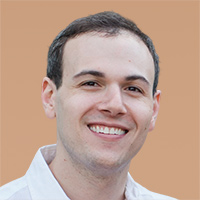How to Find the Best Retirement Community for You
A retirement community can be a great option as you age. Here's how to find the right one for you.

Erin Bendig

When trying to decide on the best place to retire, many older adults decide that a retirement community will be their next move. However, retirement communities can vary significantly in terms of their housing options, amenities, health care services and the lifestyle that they offer.
Some retirement communities are specifically for niche groups of people, while others might not be in the right location — for example, if you want to retire to a cold locale.
There's a lot to consider, so here are eight steps to find the right retirement community for you.
From just $107.88 $24.99 for Kiplinger Personal Finance
Become a smarter, better informed investor. Subscribe from just $107.88 $24.99, plus get up to 4 Special Issues

Sign up for Kiplinger’s Free Newsletters
Profit and prosper with the best of expert advice on investing, taxes, retirement, personal finance and more - straight to your e-mail.
Profit and prosper with the best of expert advice - straight to your e-mail.
1. Choose a location for the retirement community search
Step one is to determine where you want to live. Consider your motivation for moving.
Do you want to be closer to family? (That’s the main reason baby boomers purchased a new home in 2024, according to the National Association of Realtors’ annual Home Buyers and Sellers Generational Trends report).
In 2024, the main reason for all generations was simply wanting to own their own home (29%).
Are you looking for an area with more affordable housing?
Do you want to live in a bustling city or a quiet suburb?
Does your ideal retirement entail living near the beach?
When deciding where to retire, you'll need to weigh several factors, including the area's cost of living, access to quality health care, a sense of community and climate. Once you have answers to such questions as these, you can move on.
2. Set a budget
Establishing how much you’d like to spend on housing is crucial.
Your budget should include not only your monthly housing costs but also homeowner association (HOA) costs and entrance fees — many retirement communities charge them, according to the National Investment Center for Seniors Housing & Care (NIC), with entry fees ranging widely, from $40,000 to more than $2 million.
The cost of a retirement community can also vary, but according to A Place for Mom, the average monthly cost of a senior apartment is $1,400, while the average cost of a home in a 55-plus community ranges from about $1,500 to as high as $4,000, according to 55 Places.
Once you’ve determined what you can afford, you can zero in on the retirement communities that fit your budget.
3. Decide whether you want to buy or rent
Some retirement communities offer only rental properties, some offer only homes for sale and some offer both.
Consider whether you want to put down roots or have the flexibility of renting, keeping in mind that it might make sense to rent in retirement for both financial reasons and convenience. Besides, it's easy to be dazzled by such amenities as swimming pools and golf courses.
If you intend to purchase rather than rent, consider what the retirement community property market is like and weigh all the angles of a pricey financial commitment.
4. Consider what level of care you’re looking for
Retirement communities offer different levels of health care, from independent living communities to assisted living, to communities that specialize in memory care.
Some offer several options for care, with different association dues depending on the level of assistance you select.
If you're uncertain how much care you may need, then a Continuing Care Retirement Community (CCRC) might be for you.
These settings make it easier for retirees to shift from independent living to higher levels of care as they age. These CCRCs can be especially helpful for couples in which one spouse needs much more medical care than the other, but they want to remain close.
5. Look at a community’s amenities and services
Retirement communities offer a wide range of on-site amenities and services, such as beauty salons, libraries, gyms, swimming pools, lakes, pickleball and tennis courts and transportation to nearby shopping centers and grocery stores.
The trend of niche retirement communities is growing, so if one community doesn't feel right, consider one with a different culture or focus.
For retirees who want to stay intellectually active, there are communities linked to universities, for example.
Other communities focus on wellness or spirituality, and there's even a Jimmy Buffett-themed retirement community.
Some offer horseback riding, chicken coops, and media lounges where residents can record and produce podcasts.
What lifestyle and culture do you want in a retirement community?
Pro tip: Don’t overlook the value of access to gardens and parks — studies show older adults living in neighborhoods with more green spaces live longer and have a lower risk of cardiovascular disease, slower cognitive decline, lower cancer rates and better overall health.
6. Research the facility’s reputation
Do your homework by seeing whether a retirement community has received complaints through the Better Business Bureau and by reading online reviews.
Moreover, U.S. News & World Report offers a database of the best retirement communities in 2024 based on survey data from more than 400,000 residents and their family members at about 3,500 senior living communities nationwide.
Caring.com also compiles ratings and reviews of 55-plus communities, providing a search tool that lets you filter by city, state, or ZIP code.
Finally, Medicare offers a database, also with ratings, of nursing homes with rehab services.
While these search tools are helpful, they don't include every retirement community. Some excellent retirement communities or nursing homes, particularly those that are non-profit, are not included in the ratings.
You should never trust ratings alone. Always talk with current residents and poll your friends and family for the best locations.
To get a sense of the community's financial health, review the occupancy rate, financial statements and audit report. For nonprofit communities, ask to see the IRS Form 990.
7. Tour retirement communities in person
Once you’ve narrowed your options to a few communities, touring them in person can give you a better feel for what it’s like to live there.
Talk with residents about their experiences, pay attention to how staff and residents interact, don’t be afraid to ask questions and stay for dinner so you can sample the food.
If you're investigating a continuing care community, find out the staff-to-resident ratio and what kind of nurses are in-house. Bring along the Medicare checklist of questions to ask when you're touring a nursing home.
8. Consider transportation options
When considering retirement communities, make sure your transportation needs are in place.
Does the community provide transportation to visit your loved ones, go shopping or to the doctor's office? If so, at what cost to you?
If no transportation is available (which is rare) and you'll need a car, is parking provided?
Depending on your needs, transportation costs can add up quickly and could change your mind about a specific community if the price is too high.
The bottom line on finding the right retirement community
Selecting the best retirement community for you depends on a variety of factors, most notably your budget, lifestyle preferences and what kind of health care you’re seeking.
Keep in mind that where you want to live in retirement could change as you get older and experience changes in your health, finances or desired lifestyle.
Related Content
Profit and prosper with the best of Kiplinger's advice on investing, taxes, retirement, personal finance and much more. Delivered daily. Enter your email in the box and click Sign Me Up.

Daniel Bortz is the Personal Finance Editor at AARP and is based in Arlington, Va. His freelance work has been published by The New York Times, The Washington Post, Consumer Reports, Newsweek, and Money magazine, among others.
- Erin BendigPersonal Finance Writer
-
 10 Cheapest Places to Live in Washington
10 Cheapest Places to Live in WashingtonProperty Tax Is Washington your go-to ski destination? These counties combine no income tax with the lowest property tax bills in the state.
-
 Healthy to 100: Secrets from Countries Where Retirees Age Best
Healthy to 100: Secrets from Countries Where Retirees Age BestLongevity is a team sport, according to author Ken Stern. Here's the secret sauce for living long, healthy lives from countries like Italy and Japan.
-
 My First $1 Million: Semiretired CPA, 68, San Francisco
My First $1 Million: Semiretired CPA, 68, San FranciscoEver wonder how someone who's made a million dollars or more did it? Kiplinger's My First $1 Million series uncovers the answers.
-
 Healthy to 100: Secrets from Countries Where Retirees Age Best
Healthy to 100: Secrets from Countries Where Retirees Age BestLongevity is a team sport, according to author Ken Stern. Here's the secret sauce for living long, healthy lives from countries like Italy and Japan.
-
 6 Overlooked Areas That Can Make or Break Your Retirement, From a Retirement Adviser
6 Overlooked Areas That Can Make or Break Your Retirement, From a Retirement AdviserIf you're heading into retirement with scattered and uncertain plans, distilling them into these six areas can ensure you thrive in later life.
-
 I'm a Wealth Adviser: These Are the 7 Risks Your Retirement Plan Should Address
I'm a Wealth Adviser: These Are the 7 Risks Your Retirement Plan Should AddressYour retirement needs to be able to withstand several major threats, including inflation, longevity, long-term care costs, market swings and more.
-
 High-Net-Worth Retirees: Don't Overlook These Benefits of Social Security
High-Net-Worth Retirees: Don't Overlook These Benefits of Social SecurityWealthy retirees often overlook Social Security. But timed properly, it can drive tax efficiency, keep Medicare costs in check and strengthen your legacy.
-
 What to Do If You Plan to Make Catch-Up Contributions in 2026
What to Do If You Plan to Make Catch-Up Contributions in 2026Under new rules, you may lose an up-front deduction but gain tax-free income once you retire.
-
 How to Max Out Your 401(k) in 2026 (New Limits are Higher)
How to Max Out Your 401(k) in 2026 (New Limits are Higher)In 2026, the maximum contribution limits for 401(k) plans have increased, giving you an excellent shot at maximizing your retirement savings.
-
 8 Practical Ways to Declutter Your Life in 2026: A Retirement 'Non-Resolution' Checklist
8 Practical Ways to Declutter Your Life in 2026: A Retirement 'Non-Resolution' ChecklistHere's how to stop wasting your energy on things that don't enhance your new chapter and focus on the things that do.
-
 To Retire Rich, Stop Chasing Huge Returns and Do This Instead, Courtesy of a Financial Planner
To Retire Rich, Stop Chasing Huge Returns and Do This Instead, Courtesy of a Financial PlannerSaving a large percentage of your income, minimizing taxes and keeping spending in check can offer a more realistic path to retiring rich.